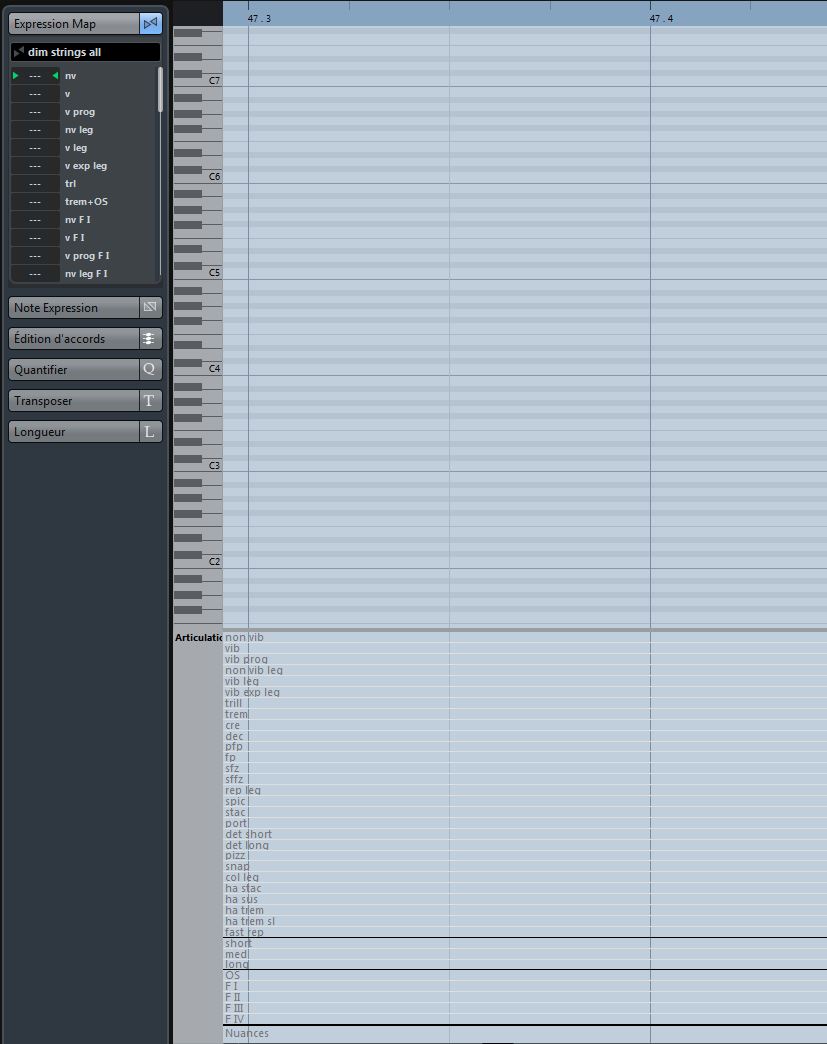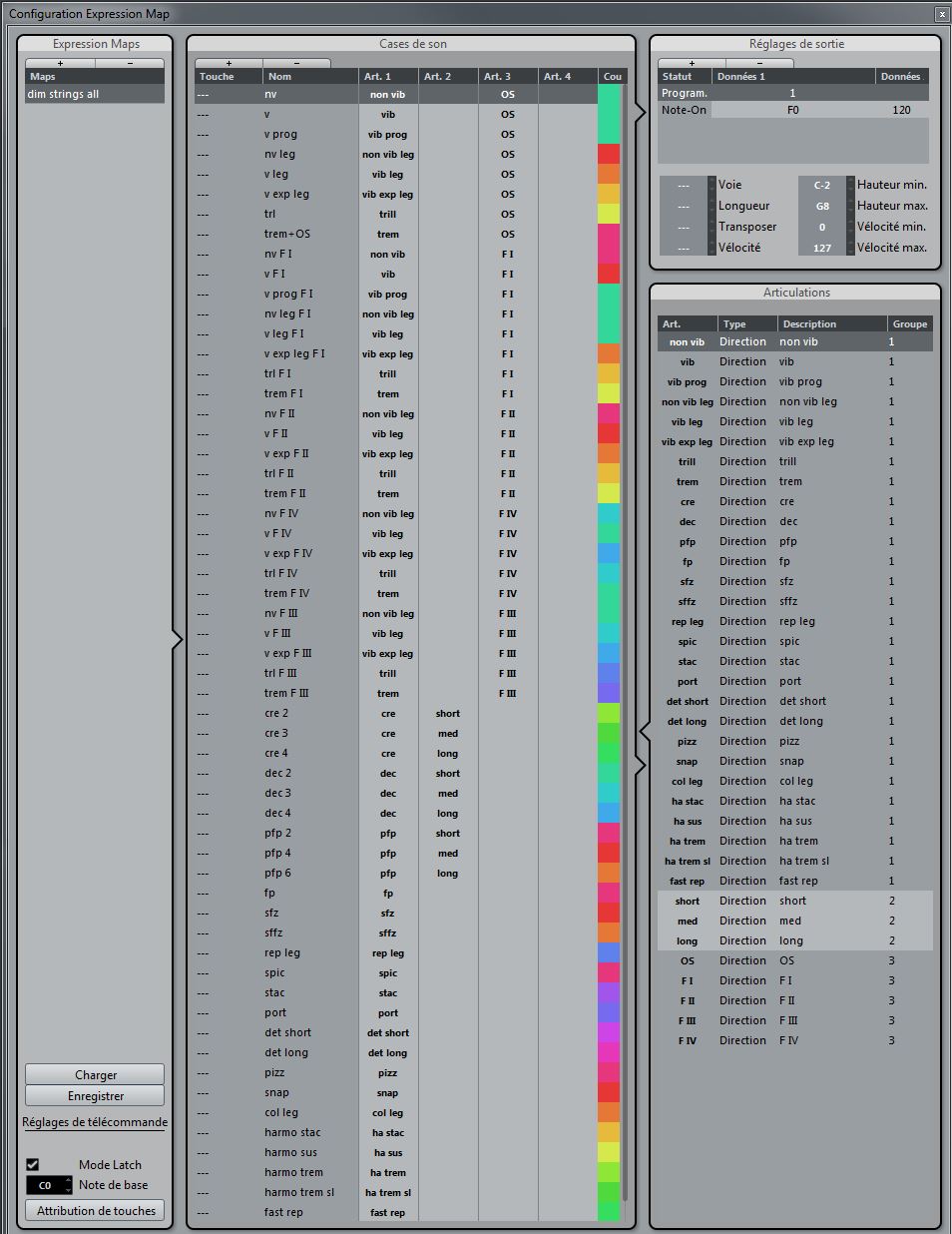Hello,
I'm just getting started with Cubase, and I have a question about how people generally organize their Expression Maps. The Expression Maps are easy to use when they contain a relatively small number of articulations, as in the case of the maps provided by VSL, but when I try to build custom maps containing a large number of articulations, the articulation lane quickly fills up the screen of the Key Editor. After a certain number of articulations, the list no longer displays properly (if only the articulation lane allowed me to scroll down...).
If possible, I would like to create large Expression Maps for VSL instruments containing several matrices in VI Pro, each with many articulations. Does anyone have any tips or strategies as to how to organize a large number (50+) of articulations in Cubase?
Thanks!
Brian

